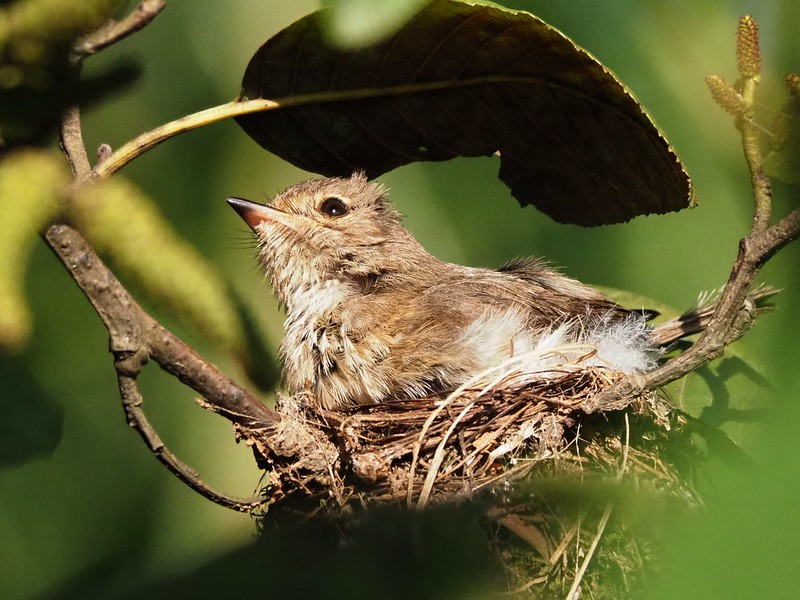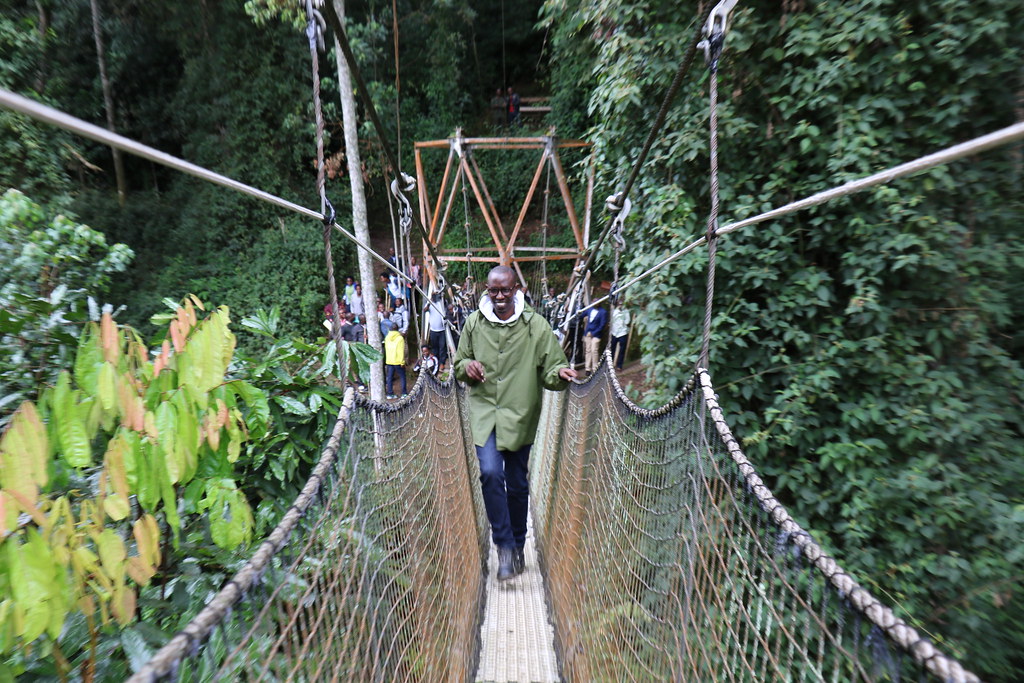Bird Watching at Nyungwe Forest National Park
Bird Watching at Nyungwe Forest National Park ; Nyungwe Forest National Park is one of the four national parks in Rwanda that has established itself as a primary tourist destination in the region known as “a Thousand Hills.” The national park is situated in Rwanda’s southern district, between Lake Kivu and the border with Burundi. The park is renowned for its verdant foliage and hosts over 322 distinct avian species.
As of November 2018, Rwanda comprises 703 bird species, with additional species incorporated into the official list since 2010. Among the resident species, there are 29 Albertine Rift endemics and numerous Lake Victoria Basin endemics, which should be included in any birder’s itinerary; most birding aficionados favor Nyungwe Forest National Park and Akagera National Park for their birdwatching pursuits.
Bird Watching at Nyungwe Forest
Nyungwe Forest in Rwanda is the largest and oldest montane forest in Africa. Bird-watching in Nyungwe Forest is feasible year-round, with December and January being the optimal months. Due to the apprehension of winter conditions, hundreds of migratory birds converge upon the nation. The deep forest of Nyungwe is home to a variety of avian species, including the great blue turaco, flycatcher, red-throated leather, sunbirds, graver’s warbler, forest hornbills, red-colored bubbler, and Rockefeller’s sunbirds, among others.
The dense Nyungwe forest complicates bird visibility, as most avian species favor the canopy over the forest interior; nonetheless, certain locations such as Bigugu Mountain, the Karamba area near Gisakura, the Kamiranzovu swamp, and the Gisakura tea estate provide opportunities for observation. Birdwatching in forests is challenging; however, the expansive road traversing the park offers superior access to the canopy, which is especially significant

Nyungwe Forest in Rwanda is a seldom-visited protected area and one of seven Important Birding Areas (IBAs) that merits inclusion in your itinerary. It hosts a diverse collection of forests and uncommon species, providing enthusiastic bird watchers with extraordinary experiences. Moreover, the park is home to various virgin forest species, including the exceptional chimpanzees and other members of its 13 primate species; so, visitors can observe not just uncommon birds but also extraordinary apes. Seize the opportunity to explore this stunning national park’s concealed treasures. Bird species present in Nyungwe Forest include:
Essential items to pack for bird watching in Nyungwe Forest.
When organizing your bird watching excursions in Nyungwe Forest National Park, ensure you pack a bird checklist, binoculars, a hat or cap, long trousers and shirts, sunscreen, insect repellent, food, a water bottle, sturdy hiking boots, a lightweight raincoat or jacket for inclement weather, and a camera.
What is the cost of bird watching in Nyungwe Forest?
Non-residents are charged $40 for birding at Nyungwe Forest National Park, foreign residents $20, and Rwandans $5. Birdwatchers who engage in a birding adventure lasting two or more days at Nyungwe Forest National Park receive a 50% reduction in admission fees. The stated rates do not include park entry fees of $100 per person for one night, $150 for two nights, and $200 for three nights.
How to optimize your Bird Watching Tour in Nyungwe Forest?
The most effective way to observe the birds is to traverse a segment of the Congo Nile route that penetrates the forest on foot or by bicycle, or to utilize one of the established forest paths leading to various regions of the forest. An alternative method to observe these birds is to undertake a canopy walk in the forest.
Additionally, you can encounter exceptional birdwatching in Nyungwe Forest by exiting the park and visiting the Gisakura tea estate to witness your preferred species. The canopy walkway is constructed at a height that elevates you over the treetops, providing an aerial viewpoint. The canopy walkway bridge in Nyungwe Forest measures 160 meters in length.
Reasons to employ a professional birding guide for avian observation in Nyungwe Forest.
Similar to other excursions, avian observation in Nyungwe Forest, Rwanda necessitates a professional guide to assist in identifying species such as the Red-chested Owlet, Regal Sunbird, Ruwenzori Batis, Ruwenzori Blue-headed Sunbird, Sharpe’s Starling, Slender-billed Starling, Striped-breasted Tit, Stuhlmann’s Double-collared Sunbird, Stuhlmann’s Starling, Thick-billed Seed-eater, White-eyed Slaty Flycatcher, among others. The knowledgeable guide will escort you to optimal bird-watching locations in Nyungwe Forest, allowing you intimate observation of the birds and their nests. Birding also acquaints you with other animals, including golden monkeys and others.
Trekking for Chimpanzees
Chimpanzee trekking in Nyungwe Forest commences at 5 a.m. at the park headquarters, requiring navigation through a forest rich in avian species, verdant vegetation, and striking hiking vistas before reaching the apes in their natural environment, with one hour designated for observing the chimps as they forage, emit pant hoots, socialize, and hunt. The expedition lasts between 2 to 6 hours and incurs a fee of $150 for a Chimpanzee trekking permit.
Canopy Walkway
One of the latest initiatives undertaken at Nyungwe Forest National Park is a third of its quality on the African continent. The Canopy Walk was established in Nyungwe Forest in October 2010, extending 70 meters above the forest floor and measuring 160 meters in length.
The canopy walk enables exploration of the high forest canopy vistas while observing exquisite butterflies, primates, and birds among the tallest branches of the forest. At specific intervals, the route crosses a profound valley, inducing a feeling of trepidation throughout the crossing. It generates a permanent recollection. A permit is necessary for the Canopy walk, commencing at the Uwinka tourist center and lasting two hours.

Tour Gisakura Tea Estate.
The Gisakura tea estate is an expansive tea plantation characterized by multiple parallel slopes and picturesque mountains in the background. An exhilarating excursion to Nyungwe Forest National Park is planned for all tea aficionados. The diligent farmers of Gisakura tea plantation work from Monday to Saturday and do not labor on Sundays. Visitors arriving on Sunday will be unable to convene as they will be recuperating in their rooms. The farmers are occupied with gathering and collecting into baskets, although they are receptive to those seeking to collaborate with them. Carry a camera to observe the ridges. Engaging with them will facilitate your understanding of the processes involved in the selection, processing, and preparation of tea.
Trekking for Primates in Nyungwe Forest
Nyungwe Forest hosts 13 distinct primate species. The most common primate in the Albertine Rift is the Rwenzori Colobus. Colobus monkeys exhibit high sociability, particularly those in Nyungwe, as they traverse in large groups, leaping from tree to tree. Golden Monkeys travel in groups of three or four. Each troop of Golden monkeys contains one adult male.
Among the several species of monkeys are silver monkeys, L’hoest monkeys, owl-faced monkeys, golden monkeys, red-tailed monkeys, crowned monkeys, Dent’s Mona monkeys, vervet monkeys, and olive baboons. Olive baboons, also referred to as Anubis baboons, possess a greenish-grey pelage that envelops their physique. They were discovered along the road at Nyungwe Forest National Park and within Akagera National Park. They inhabit large social groups and are predominantly terrestrial primates.
Trekking and nature Walks in Nyungwe Forest
Approximately 130 kilometers of hiking routes have been developed in the Nyungwe Forest allowing hikers and environmental enthusiasts to explore its interior and diverse ecosystems. The remarkable Igishigishigi Trail is a short hike that includes East Africa’s largest canopy walk, offering spectacular vistas of Nyungwe Forest, whilst the Bigugu Trail ascends to the park’s highest peak at 2950 meters. It offers an aerial view of the canopy foliage in Nyungwe Forest National Park, along with several monkeys, butterflies, and vibrant birds.
